C
CAMERON, Ian
To the Furthest Ends of the Earth
The history of the Royal Geographical Society 1830-1980. SPRI comment that this book has many inaccuracies.
Antarctica: The Last Continent.
An Antarctic introduction to various expeditions. 1974 Cassell


CAMPBELL, R.J.
The Discovery of the South Shetland Islands, 1819-1820 The Journal of Midshipman C. W. Poynter
Series: Hakluyt Society, Third Series 2000 £45 In 1819, William Smith, with a general cargo from Montevideo to Valparaiso, sailed further south round Cape Horn than his predecessors, in the hope of finding favourable winds. He sighted land in 62"S. His report to the Senior Naval Officer in Valparaiso was ridiculed, but on a subsequent voyage he confirmed his discovery, taking surroundings and sailing along the coast. As a result Captain Shirreff, the Senior Naval Officer, chartered his vessel, the brig Williams, and having put Edward Bransfield, the master of his ship, HMS Andromache, in charge, sent her to survey the new discovery. Charles Poynter was one of the midshipmen who sailed with Bransfield. His account of this expedition, which forms the principal part of this volume, recently came to light in New Zealand, and is the only first-hand account of the voyage, during which the Antarctic mainland was sighted for the first time, that appears to have survived. The introduction contains some remarks on the South Shetland Islands, followed by chapters giving a brief look at the history of the Spanish in South America and the British presence in the area, together with the speculation leading to the search for Antarctica and chapters on early nineteenth-century navigation and hydrographic surveying. There were a number of second-hand accounts of William Smith's earlier voyages, and Bransfield's expedition which appeared in reports, journals and books at the time. These are included with brief accounts of other voyages to the South Shetland Islands which took place while Bransfield was in the area, to complete the picture. Poynter's journal explains the reasons behind most of the names given to land features, some of which were not included in the published accounts at the time. There are also three charts and a number of views which are reproduced together with modern photographs of the area. It also contains a large number of geographical positions which enable a track chart of the voyage to be produced and an assessment of the accuracy of this short but remarkable voyage to be made. Finally the chart published as a result of Bransfield's survey is included.
CHAPMAN, Walker
Antarctic Conquest. The Great Explorers in Their Own Words.
Published Dobbs- Merrill 1965.
The Loneliest Continent; The Story of Antarctic Discovery
A general overall review of Antarctic exploration. First published USA 1964. Jarrolds also published in Britain 1967.
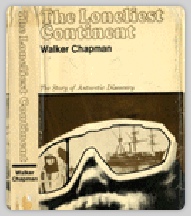
CHARCOT,Jean-Baptiste
The Voyage of the 'Why Not' in the Antarctic.
(Le Pourquoi-Pas? dam L'Antarctique. Journal de la Deuxieme Expedition Au Pole Sud 1908-10)
A journal of the second French South Pole Expedition 1908 -10. A well run and highly productive expedition which charted 3000 kilometres of previously unknown coastline. The ship was later lost with 41 men on board including Charcot of Iceland in 1936. Published by Hodder & Stoughton
Towards The South Pole Aboard The Francais
Translated by A. Billinghurst, facsimile edition by Bluntisham Books 2005. Quite expensive at £45.
The first French expedition to the Antarctic in 1903 reveals Charcot to be a man of intelligence and practicality. His attitude towards his crew and the comforts he tried to provide for them were well advanced for the time. Finance by an inheritance received in1893, Charcot's French Antarctic Expedition initially intended to search for the 'Nordenskjold' from whose Antarctic expedition there had been no word in the spring of 1903. However, on reaching Buenos Aires and finding that the Swedish expedition had returned safely, Charcot continued to the Polar Archipelago and the Graham Land coast. There, in spite of damage sustained by the Francais, the expedition succeeded in discovering 620 miles of new coasts and islands, making an accurate map of the Graham Land Archipelago, and collecting numerous scientific observations.
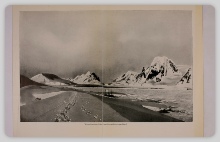
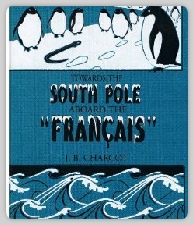
CHERRY-GARRARD, Aspley
The Worst Journey In The World
What can be said about this book? This is a carefully thought-out narrative giving a first-hand account of Scott's last expedition. Cherry did not immediately begin writing this book on his return from Antarctica but sought opinion and advice from literary friends. These include George Bernard Shaw. The book is nothing but a classic. It is superbly written in a most understated way. Cherry himself suffered greatly on his return to Britain and had a nervous break down. He had to live with the fact that the public thought Scott a hero and it always played on his mind the fact that Scott and his crew died just a eleven miles south of a food depot laid Gran and himself. If only he had gone a bit further........? The truth is that Scott gave misleading orders and changed plans at the last minute (eg taking an extra man to the pole). Cherry died on the 18th May 1959. He was a very wealthy landowner and personally published 'Worst Journey ' to be free from publisher influence. Later editions had updated forewords expressing political views about the war.
The book when first published was a limited edition of 1,500 copies -a 2 vol. boxed set (Constable) this was on 4th Dec 1922. The book had two different bindings. It quickly sold out despite its high cost- £3! Chatto & Windus produced the first single volume edition in April 1937 this of only, 1000 copies, again it quickly sold out and was extensively reprinted. Penguin published a 2 vol edition in June 1937 this was reprinted three times within 18 months. Modern editions are still appearing and are numerous.
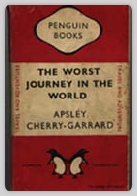
CONRAD, L.J.
Bibliography of Antarctic Exploration: Expedition Accounts from 1768 to 1960
This book is a reference to the first person accounts that define Antarctic history. Conrad has researched bibliographies, the Scott Polar Research Institute Catalogue, major auction house catalogues, the USN/NSF bibliography and his own extensive rare book collection. His "Bibliography" answers the questions 'Who wrote about this expedition, what was the author's exploration role, and what did the expedition accomplish?' However, quite an expensive book at $100. Published 1999 by Washougal.
COOK, Fredrick
Through the First Antarctic Night 1898 - 1899: A Narrative of the Voyage of the ' Belgica' .
Cook joined the Belgian Expedition along with Amundsen. They were the first explorers to winter in the Antarctic. One of the classic exploration books. Published 1900 by Heineman. A facsimile was published by McGill-Queens in1980.
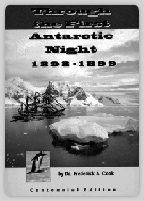
CRANE, David
SCOTT OF THE ANTARCTICA Life of Courage and Tragedy.
Awaiting review
CRAWFORD, Janet
That First Antarctic Winter.
The story of the Southern Cross expedition of 1898-1900 as told by the diaries of Louis C. Bernacchi. Published by Southern Latitude Research, New Zealand. The publishers have the following comment on their blurb by H.G.R.KING, polar authority and one-time Librarian, Scott Polar Research Institute ''Janet Crawford has made a first-class job of transcription and knitting together the fragments - the diaries themselves are really hard to decipher in places - and the result is a text which "makes one gasp and stretch one's eyes"; one knew that a pretty dismal time was had by all at Camp Ridley. In all it demonstrates so very vividly how (to quote Louis Bernacchi), "a handful of men who are thrown together day after day, month after month, become irascible and impossible towards one another".